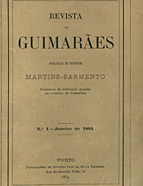

................................
23). Mário de Vasconcelos Cardoso was born in 1889. He was the son of the painter António Augusto da Silva Cardoso. He directed the Martins Sarmento Society and its museum and was a member of several organisations dedicated to archaeology. Alberto Vieira Braga, a writer, ethnographer, and folklorist, was born in Guimarães in 1892. He served on several occasions as a member of the Board of the Martins Sarmento Society and as Director of the Revista de Guimarães . Manuel Bernardino de Araújo e Abreu was born in 1921 and died on 1 October 2010. Manuel Bernardino de Araújo e Abreu served as mayor of Guimarães from 1967 to 1974. Between 1989 and 2004, António dos Santos Simões served as the director of the Revista de Guimarães . He was born in 1923 and passed away in Guimarães in 2004. Following the 25 April Revolution, he became one of the founders of the MDP/CDE (SIMÕES, Joaquim Santos, “Simões, Joaquim Santos” . Sociedade Martins Sarmento, Arquivo Alfredo Pimenta [Martins Sarmento Society, Alfredo Pimenta Archive]). Amaro das Neves succeeded António Santos Simões as director of Revista de Guimarães and is the author of a blog entitled Memórias de Araduca [Memories of Araduca], in which he focused on local history, especially that of the city of Guimarães. From a prosopographical perspective, which warrants further exploration in future studies, it is notable that the directors of the periodical under analysis primarily belonged to a bourgeois elite associated with liberal professions. This group included law graduates like Avelino da Silva Guimarães and medical graduates such as Joaquim José de Meira, both of whom served as mayors of Guimarães. The same is true for the Abbot of Tagilde, who also held this position. For his part, Eduardo de Almeida was a member of parliament, which further confirms that all these individuals held significant political positions. The Abbot of Tagilde, Eduardo de Almeida, and Mário Cardoso were three of the main contributors to the Revista de Guimarães , but others who also stood out included Justino Mendes de Almeida, Jorge de Alarcão, Vítor Oliveira Jorge, and Octávio Lixa Felgueiras, among others. There were also many foreigners, especially from the 1940s onwards. They were predominantly Spanish, aiming to establish a peninsular platform that would bring together the northern regions of Portugal and Spain. In future studies, it would be interesting to examine the cultural cooperation and the regional and transnational identity reflected in the periodical in question. However, it can be hypothesised that there has been little to no explicit theorisation of these issues, nor their articulation through manifestos or unequivocal political statements. On the contrary, these relationships can be examined through the lens of the abundant promotion of the Castro culture , particularly during the Estado Novo period (notably from the 1940s onwards) and following the 25 April 1974 Revolution.
This work is financed by national funds through FCT - Foundation for Science and Technology, I.P, in the scope of the projects UIDB/04311/2020 and UIDP/04311/2020.
